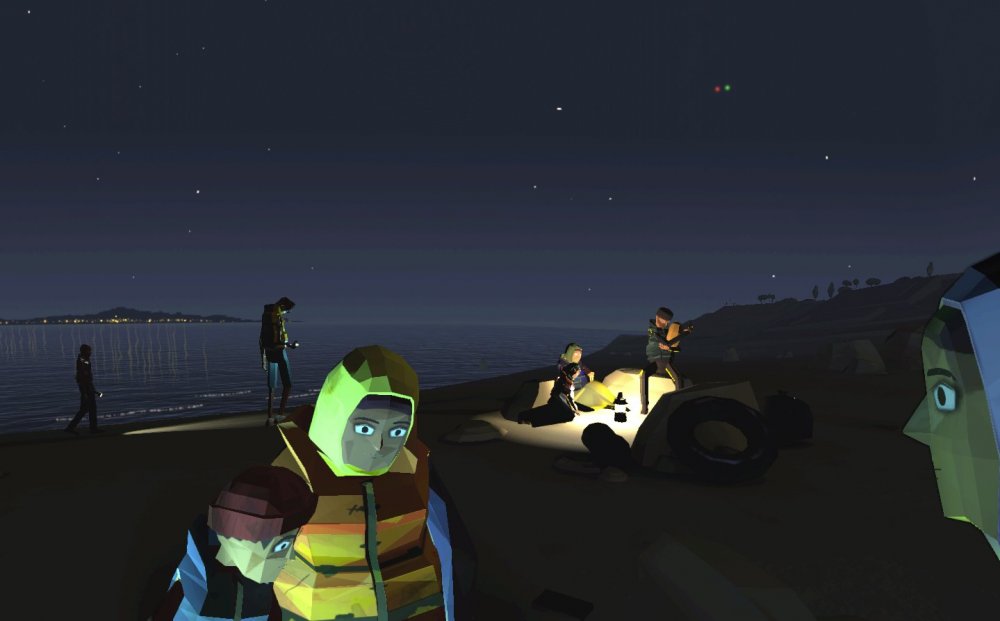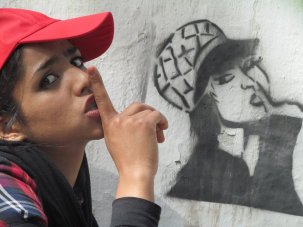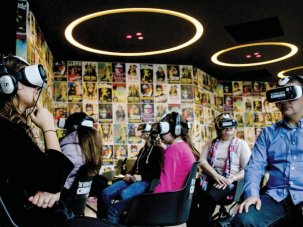“Saying VR is an empathy machine is like saying a paintbrush is an art machine,” comments panellist Clint Beharry at Sheffield Doc/Fest’s Alternate Realities Summit. The festival last year awarded the interactive prize to Gabo Arora’s 360 film Clouds over Sidra, about a Syrian refugee in Zaatari camp in Jordan, helping to propel the UN production onto the international film circuit and boost donations to UNICEF. A year-long debate followed about the unique power of the medium to humanise characters and bring the world’s most pressing stories into people’s homes.
Sheffield Doc/Fest’s Alternate Realities exhibitions and talks ran 10-15 June 2016.
For many Sheffield delegates, Sidra was their first narrative experience in VR and a positive one. The documentary world has since come to accept VR’s potential with an understandable wariness.
This year, organisers furthered commitment to VR by hosting a packed-out summit and exhibiting 12 exciting new pieces drawn from the UK, France, USA and Australia. Talks on post-singularity, VR filmmaking, journalism, research and binaural sound sold out and demand to view the films totally outstripped supply of headsets.
It’s fascinating to see how the genre of VR docs is evolving. Jessica Brillhart, Google’s principle VR filmmaker and author of eloquent, public studies of the creative process, suggested: “If there is no substance, I have no reason for being there”. Luckily, there was substance galore in Mark Atkin’s well-curated showcase of work, as creators adopt new techniques and push boundaries of the format – narratively, spatially, sonically and visually.
A great example of the new visual daring is Oscar Raby’s latest work for BBC Connected Studios, Easter Rising: Voice of a Rebel, a beautifully crafted dreamscape documenting the bloodshed of Ireland’s armed insurrection of a century ago. You are invited to live through the memories of 19-year-old Willie McNieve, a rebel who fought against the British and later in his life recorded his memories of the events onto cassette.
Raby’s developing style – the piece is part-animation, part-sketchbook, part-gamer narrative – calls into question the very essence of memory and testimony, the landscape of dreams versus historical fact. In one sublime moment of reflection Willie says, “Ladies and gentlemen… I have taken the precaution of committing what I had to say to tape so that if I wasn’t able to say it to you in person, I could hand it to you in this instrument in which you now hear my voice. Thank God for technology.” One can only imagine his reaction to Raby’s immersive interpretation of his words. Easter Rising’s triangular universe is truly astonishing and offers fresh perspectives for immersive storytelling by putting the viewer at the heart of the action, able to peer around corners and through windows.
Elsewhere, computer-generated environments usually associated with gaming now blend with serious documentary ambition in Nonny de la Peña’s shocking exploration of American abortion clinics Across the Line and the BBC’s VR-journalistic experience about Syrian refugees We Wait, a computer-generated piece of VR journalism in which viewers are asked to don a lifejacket and join real-world refugees on the dangerous Mediterranean Sea crossing to Greece. Across the Line puts the viewer in the shoes of a woman attending a clinic who’s subjected to a torrent of misinformation and abuse – real audio captured from protesters. Whereas first-wave films took the viewer into 360 video settings, these pieces provoke movement, depth and interaction.
The creative possibility of binaural sound also shone through at Sheffield Doc/Fest. Audio in VR can be overlooked, so congratulations are due for giving it such artistic prominence. The BBC’s R&D team delivered a lively talk binaurally through headphones which featured an engaging clip from Shelley Silas’s radio drama The Protest. Notes on Blindness: Into Darkness, the marvellous VR film about theologian John Hull’s experience of losing his sight in the 1980s, accompanies a rectangular feature-length film; both screened at the festival. Into Darkness is a joyful extension of the narrative, plays to the medium’s strengths and makes stunning use of sound, and won the Alternate Realities Jury’s VR Award.
There was a noticeable increase in run times compared to first-wave films such Mike Tucker’s three-minute Tana Pura or Phil Tippett’s two-minute stop-motion wonder Mad God. At Sheffield there were experiences as long as 25 minutes – perhaps a sign viewers that are already growing accustomed to immersion or that filmmakers are learning how to engage the ‘visitor’ and avoid nausea through better editing. Given that viewers are locked away from reality during viewing, run time is an oddly salient detail. After five minutes’ immersion in a public gallery, you might start wondering if your bag is safe. After a disconcerting 10 minutes, who knows what’s happening out there?
Migration and Syria proved to be strong themes, with three of 12 pieces dedicated to the putting the audience in the shoes of refugees in crisis: the aforementioned We Wait; festival commission Invisible, about refugees in detention in the UK; and Home: Aamir which documents the life of a Sudanese refugee in the Calais Jungle. Gabo Arora followed up success of last year by premiering his latest film in a VR series for the United Nations, Beyond the Lake, about a Burundian woman’s escape from conflict and her quest to find her daughters.
For sci-fi lovers, Mars 2030 and Tom Burton’s Home gave delegates the chance to visit outer space, but Lynette Wallworth’s Collisions set here on Earth was undoubtedly the most accomplished film in the exhibition. Collisions is a rare gem combining fantastic real-life characters, a complete, devastating story and the vivid palette and texture of the remote Australian desert. Wallworth deftly draws you into her journey to the land of indigenous elder Nyarri Morgan and the Martu tribe. VR is an excellent medium for relating Morgan’s riveting story (which I won’t spoil).
Finally, Jane Gauntlett’s In My Shoes project was very well-received at Doc/Fest. Actor/director Gauntlett suffers from epilepsy and uses virtual reality to show viewers what life is like for her and the sometimes disturbing mismatch between mind and body. Gauntlett’s approach is an original and deeply personal experience, well worth the 20 minutes.
Sheffield has now firmly established itself as a go-to event for cutting-edge VR material. The only problem is returning to reality afterwards.
-
The Digital Edition and Archive quick link
Log in here to your digital edition and archive subscription, take a look at the packages on offer and buy a subscription.







